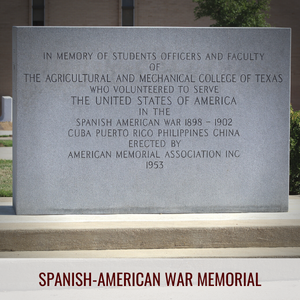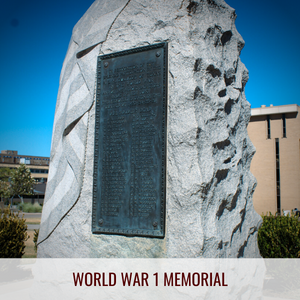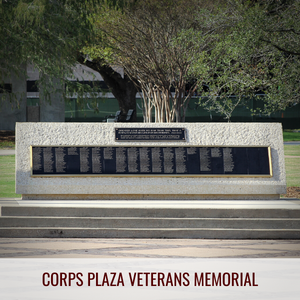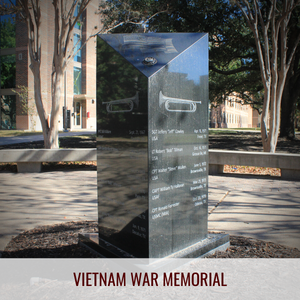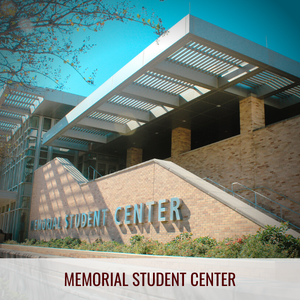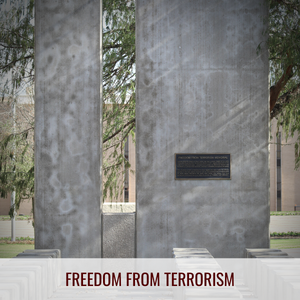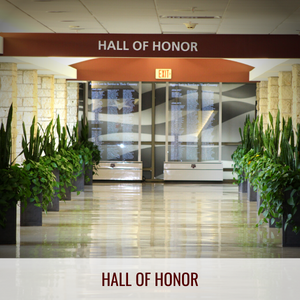Texas A&M Veteran & War Memorials
Beginning as a military institution and rich with military ties, culture and traditions, Texas A&M University is home to numerous memorials and sites of honor across campus dedicated to the memory and sacrifice of Aggies who have selflessly given all in service to our great nation.
We encourage you to visit our beautiful campus and experience for yourself the sense of selfless service and honor exuded by these sites.
Memorials
Click the image or link below to learn more about each memorial.
Sites of Honor
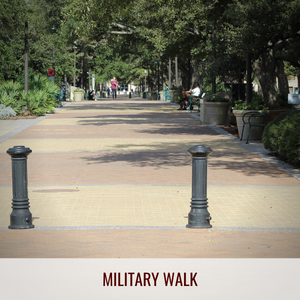
Military Walk
In 1908, College Architect Frederick E. Gieseke proposed turning the already established north-south cross road into a ceremonial axis. The axis connected the large mess hall on the north side to the large assembly hall on the south end. After the construction of Guion Hall at the south end, the Corps of Cadets would march north down the axis to the dining hall in military formation for their three daily meals, thus dubbing the thoroughfare Military Walk. After Guion Hall was demolished in 1971, Military Walk was remade into a green space bordered by walkways lined with shady Live Oaks. The current brick pathway leading from Rudder Center all the way through to the north end of campus is still referred to as Military Walk by Aggies of all generations.
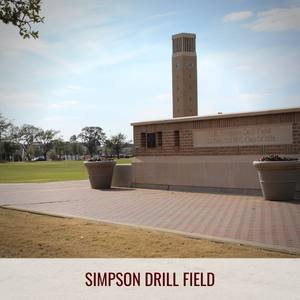
Simpson Drill Field
Simpson Drill Field is named for Lieutenant General Ormond R. Simpson '36. A U.S. Marine Corps veteran of WWII, Korea, and Vietnam, he served as Vice-President for Student Services and head of the School of Military Sciences until his retirement in 1985. Dating back to the opening of the College in 1876, this area was the original drill field for the Corps of Cadets and has been used for artillery and infantry exercises, practice maneuvers, served as the original football field until 1905, and was the site of Aggie Bonfire from 1909-1955. Many final reviews and graduations have occurred on Simpson Drill Field. In 1919, A&M's Board of Directors chose to honor each of the former students who died in service during World War I with a living memorial. The tree planting ceremony took place on February 23, 1920, with 52 live oak trees placed on the Drill Field along Old Main and Lamar Street north to Hart Hall.* Construction prompted the relocation of all the trees around the Drill Field where they remain today.
* Each fallen Aggie is identified at the base of the tree with his name, class year and details of his death. Later, three additional names and memorials were added bringing the total to 55 Aggies. During the World War I Centennial, an additional 15 Aggies were identified who paid the ultimate sacrifice. In January 2022, memorial trees and plaques were placed to honor those young men. Following the tree planting ceremony in 1920, an additional tree was planted for College Vice President and former Texas Lieutenant Governor, Asbury B. Davidson.
The information contained within these web pages was derived from and inspired by the research presentation, “War Memorials at Texas A&M”, in Dr. Anat Geva’s Summer 2016 ARCH 406 course. Students participants in the research presentation included Logan Lebeda, Kimber Wray, Chelsea Jennings, Sarah Fletcher, Tyler Blanton, Chris Schwarz, Josh Berry, Luke Franks, Erin Van Doren, Steven Cervera, and Jake Farris.

